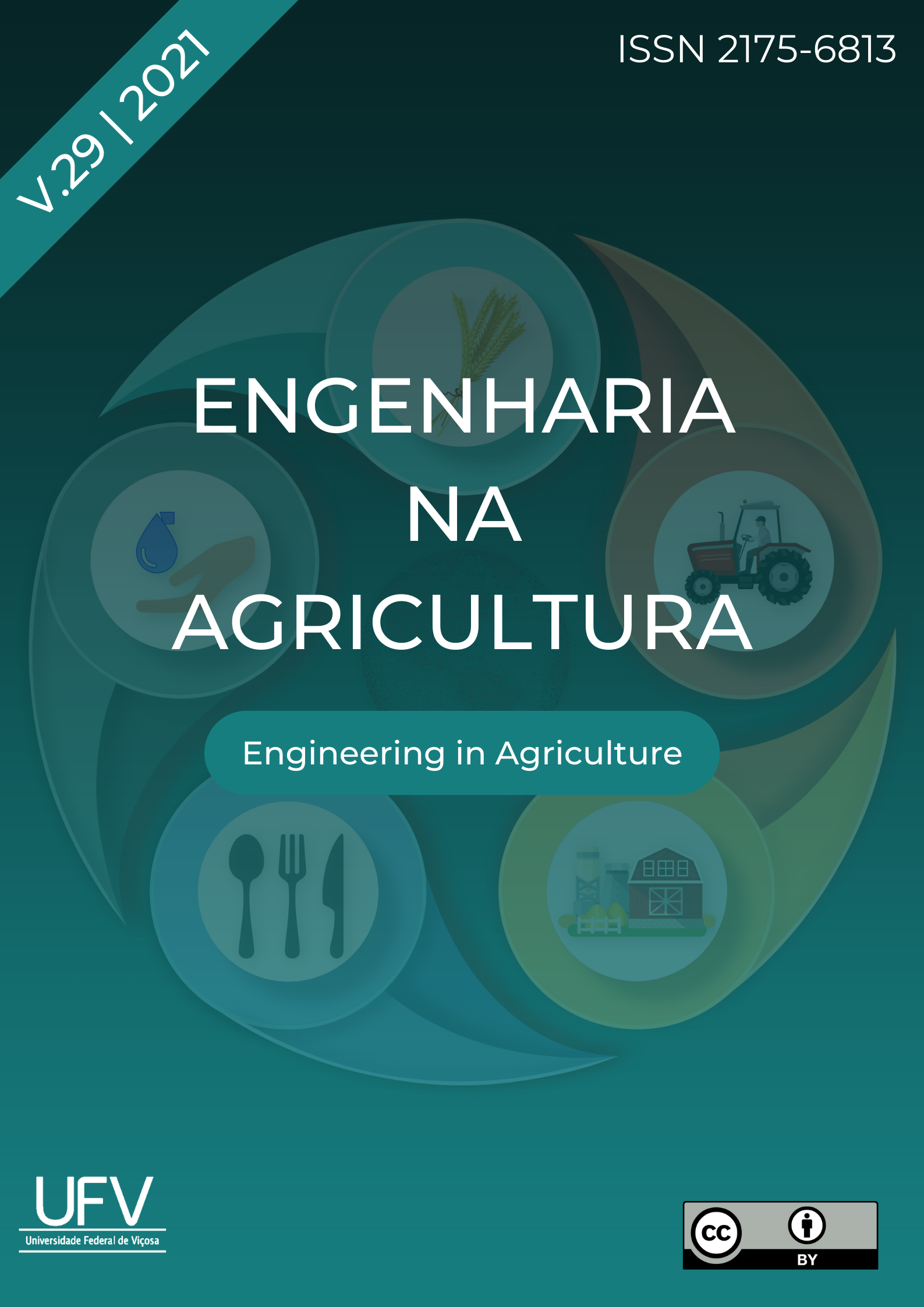Numerical simulation applied to milk cooling
DOI:
https://doi.org/10.13083/reveng.v29i1.9527Palavras-chave:
Mathematical modelling , Finite element method , Milk cooling tankResumo
A model is a representation of a real system that can be analysed and yield predictions under different operating conditions. The aim of this study was to model a milk cooling tank that cools milk to 4 °C to preserve its quality after milking at the farm. The model was developed and simulated using the software Ansys for finite element analysis. The results from the simulations were compared to experimental data. The model simulated milk cooling in the tank with an error lower than 2%, which is considered acceptable for numerical simulations. In other words, the model satisfactorily represents the real system. Thus, alternatives can be directly tested in the computational model to improve and optimise the milk cooling process and to better use the system without actually implementing them in the real system.
Downloads
Referências
ATANGANA, A.; BALENU, D. New fractional derivatives with non-local and non-singular kernel theory and application to heat transfer model. Thermal Science, v. 20, n. 2, p. 763-769, 2016.
AZO MATERIALS, Stainless Steel – Grade 304, 2001. Available at https://www.azom.com/properties.aspx?ArticleID=965. Access on May, 2019.
CHANDAN, R.C. Dairy-Based Ingredients. Chapter 1, Eagan Press, 1997.
CLÍNICA DO LEITE. Contagem Bacteriana Total. Mapa da Qualidade do
Leite, 1 ed. Piracicaba: ESALQ/USP, 2016.
EMBRAPA. Produção de leite com qualidade na propriedade rural. 2011.
MINISTÉRIO DA AGRICULTURA, PECUÁRIA E ABASTECIMENTO. Instrução Normativa Nº 62, 2011.
MINISTÉRIO DA AGRICULTURA, PECUÁRIA E ABASTECIMENTO. Projeções do Agronegócio - Brasil 2017/18 a 2027/28. Ministério da Agricultura, Pecuária e Abastecimento. Secretaria de Política Agrícola. Brasília: MAPA/ACE, 2018.
MOHAPATRA, D.; RAO, P. S. A thin layer drying model of parboiled wheat. Journal of Food Engineering, v. 66, p.513-518, 2005.
NIMDUM, P.; PATAMAPROHM, B.; RENARD, J.; VILLALONGA, S. Experimental method and numerical simulation demonstrate non-linear axial behaviour in composite filament wound pressure vessel due to thermal expansion effect. International Journal of Hydrogen Energy. v. 40, p. 13231-13241, 2015.
RAGSDALE, C. T. Modeling & Decision Analysis - Revised Edition. 1 ed. Connecticut: Cengage, 2009.
PENG, P.; SONG, H.; ZHANG, T.; ADDY, M. ZHANG, Y.; CHENG, Y.; HATZENBELLER, R. Concentrated high intensity electric field (CHIEF) system for non-thermal pasteurization of liquid foods: Modeling and simulation of fluid mechanics, electric analysis, and heat transfer. Computers and Chemical Engineering, v. 97, p. 183-193, 2017.
SHEIKHOLESLAMI, M.; GANJI, D.D. Ferrohydrodynamic and magnetohydrodynamic effects on ferrofluid flow and convective heat transfer. Energy, v. 75, p. 400-410, 2014.
SHEIKHOLESLAMI, M.; GANJI,D.D.; JAVED, M.Y.; ELLAHI, R. Effect of thermal radiation on magnetohydrodynamics nano fluid flow and heat transfer by means of two phase model. Journal of Magnetism and Magnetic Materials, v. 374, p 36-43, 2015.
ZHAO, B. Temperature-coupled field analysis of LPG tank under fire based on wavelet finite element method. Journal of Thermal Analysis and Calorimetry. v. 117, p. 413-422, 2014.
Downloads
Publicado
Como Citar
Edição
Seção
Licença
Copyright (c) 2021 Revista Engenharia na Agricultura - Reveng

Este trabalho está licenciado sob uma licença Creative Commons Attribution-NonCommercial 4.0 International License.
Autores que publicam nesta revista concordam com os seguintes termos:
O(s) autor(es) autoriza(m) a publicação do texto na da revista;
O(s) autor(es) garantem que a contribuição é original e inédita e que não está em processo de avaliação em outra(s) revista(s);
A revista não se responsabiliza pelas opiniões, ideias e conceitos emitidos nos textos, por serem de inteira responsabilidade de seu(s) autor(es);
É reservado aos editores o direito de proceder a ajustes textuais e de adequação às normas da publicação.
A partir da submissão, o autor estará cedendo integralmente seus direitos patrimoniais da obra à publicação, permanecendo detentor de seus direitos morais (autoria e identificação na obra) e de acordo com a Licença Creative Commons, CC BY-NC.








 Esta obra está licenciada com uma Licença
Esta obra está licenciada com uma Licença 